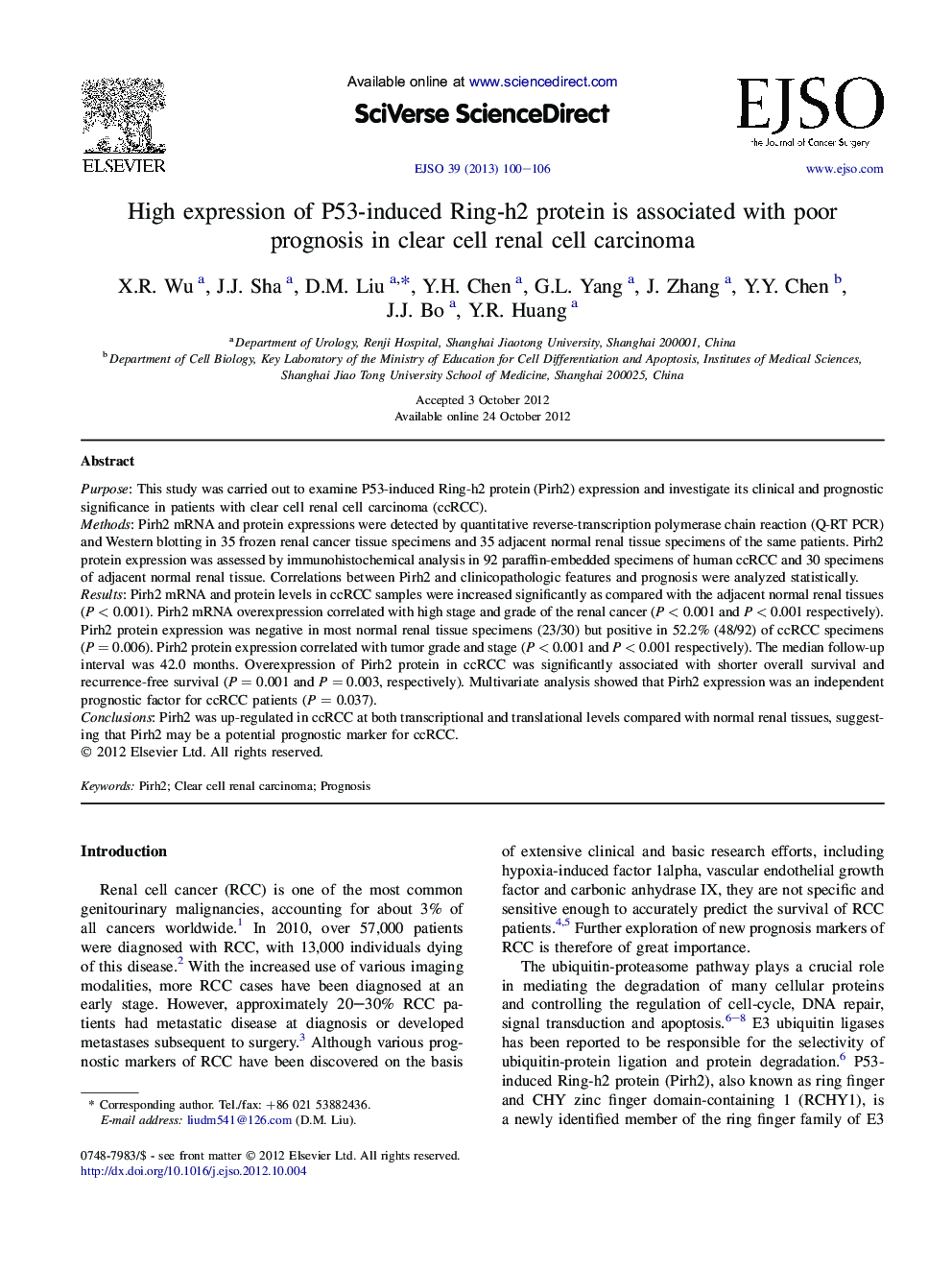| Article ID | Journal | Published Year | Pages | File Type |
|---|---|---|---|---|
| 3985359 | European Journal of Surgical Oncology (EJSO) | 2013 | 7 Pages |
PurposeThis study was carried out to examine P53-induced Ring-h2 protein (Pirh2) expression and investigate its clinical and prognostic significance in patients with clear cell renal cell carcinoma (ccRCC).MethodsPirh2 mRNA and protein expressions were detected by quantitative reverse-transcription polymerase chain reaction (Q-RT PCR) and Western blotting in 35 frozen renal cancer tissue specimens and 35 adjacent normal renal tissue specimens of the same patients. Pirh2 protein expression was assessed by immunohistochemical analysis in 92 paraffin-embedded specimens of human ccRCC and 30 specimens of adjacent normal renal tissue. Correlations between Pirh2 and clinicopathologic features and prognosis were analyzed statistically.ResultsPirh2 mRNA and protein levels in ccRCC samples were increased significantly as compared with the adjacent normal renal tissues (P < 0.001). Pirh2 mRNA overexpression correlated with high stage and grade of the renal cancer (P < 0.001 and P < 0.001 respectively). Pirh2 protein expression was negative in most normal renal tissue specimens (23/30) but positive in 52.2% (48/92) of ccRCC specimens (P = 0.006). Pirh2 protein expression correlated with tumor grade and stage (P < 0.001 and P < 0.001 respectively). The median follow-up interval was 42.0 months. Overexpression of Pirh2 protein in ccRCC was significantly associated with shorter overall survival and recurrence-free survival (P = 0.001 and P = 0.003, respectively). Multivariate analysis showed that Pirh2 expression was an independent prognostic factor for ccRCC patients (P = 0.037).ConclusionsPirh2 was up-regulated in ccRCC at both transcriptional and translational levels compared with normal renal tissues, suggesting that Pirh2 may be a potential prognostic marker for ccRCC.
